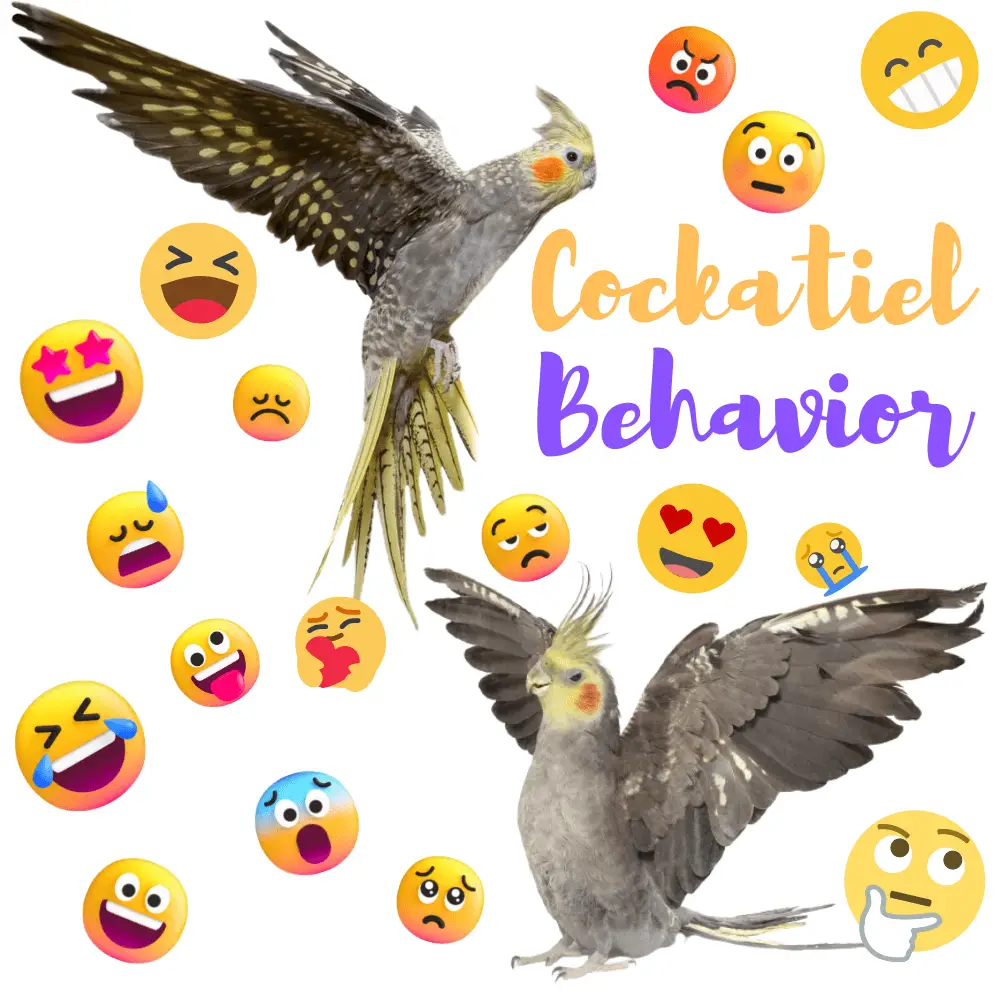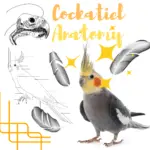
Cockatiel behavior: The cockatiel is an intelligent and expressive bird. Analyzing her behavior will allow you to guess a wide range of feelings she is experiencing.
This bird has several means of communication: sounds, postures, and attitudes. In addition to this, she has an erectile hoopoe whose position helps to understand her state of mind at the moment.
Analyze the mood of your cockatiel: the hoopoe as a clue
The erectile hoopoe of the cockatiel is not only decorative, it also serves the animal to express its moods. Thus, it is very useful to observe it to know what your bird thinks. An erect and very straight hoopoe will express excitement, for example, while a hoopoe very removed backward will potentially be a sign of fear.
In order not to be mistaken, you can associate the movement of the hoopoe with other physical signs: if the bird has its hoopoe pulled backward but leans towards you and closes its eyes, it is because it desires your affection. But this same position of the hoopoe, associated with an open beak (and often blows) is a sign of aggressiveness!

The parade of the cockatiel male
The male, from a certain age, performs a parade during which he opens his wings in the shape of a heart while singing cheerfully. It can sometimes strike with its beak on the perch or on the ground. This behavior is unique to the male and consists of a good means of sex.
Pecking in cockatiel
The cockatiel can sometimes exhibit a deleterious behavior: it tears off or damages its own feathers or those of a congener.
It is usually the expression of discomfort or significant stress. Inspect the living conditions of your cockatiel: does it have enough toys and are they varied (do not hesitate to rotate the toys)? Is the aviary of sufficient size? Does the animal have a congener at its side?
However, this behavior can also sometimes be related to a medical problem, or even to the breeding method used: EAM cockatiel has a much higher tendency to pecking than EPP or MAN.
Beak squeaking in cockatiel
Beak squeaking (not to be confused with beak snapping) is often associated with sleep. The cockatiel is picked up on itself, the plumage is sometimes slightly swollen. It’s nap time! Do not disturb your pet otherwise, you will put him in a bad mood. Beak squeaking is related to a positive sensation: your bird feels good and confident where it is.
The cries of the cockatiel
Why is my cockatiel screaming? This is a question that any budgie owner asks himself at one time or another.
Indeed, the cockatiel can be a very noisy animal: do not adopt if you can not stand the high-pitched cries and if you risk quickly losing patience (or your neighbors!). Several things can cause a bird to scream: it may have seen you and then decide to howl to get your attention. This is especially true for hand-bred cockatiel (EAM), but this behavior can also occur in EPP and MAN. For example, your bird can claim that you open its cage if it is indoors. He may also scream in fear if something has been the source of his fear: usually, this is accompanied by a disorderly flight. Screaming can be a sign of boredom: your parakeet may lack stimulation. If she lives alone, you will need to quickly adopt a congener. On the way out, a cockatiel can call her congeners when the flight is separated from one room in the house to another.
Finally, your cockatiel may also scream… because she just wants to scream! They are birds that vocalize a lot and even if we sometimes do not understand the reason, they may feel the need to make their voice heard!

The dance of the rain
Cockatiels love water and do not hesitate to offer them a clean water bathtub or a mist when they do not have access to an outdoor aviary. A cockatiel who takes pleasure in her “shower” will exhibit a special behavior: a kind of “rain dance” during which she will snuggle on her perch and swing from side to side passing her head under her wings.
The cockatiel that taps its beak
It can happen that your cockatiel taps its beak against various supports: its perch, the table, the floor … If she presents herself with the wings in the shape of a heart, it is probably a male who is in a love parade. However, if he has a very low hoopoe and he opens his beak while blowing, he may be threatening you because you scare him!
Tremors of the cockatiel
Do not panic: tremors are not always abnormal in cockatiel. If she can indeed be cold or sick (check if her behavior, food intake, and droppings are normal), it can also be simply stress, self-regulation in the face of temperature or simply a period of molting!
Vocalizations of the cockatiel: screams, songs, and mutism
Parakeets express themselves a lot and as such, they can sing. These can be pleasant tweets, or even sometimes imitations of songs for the most motivated cockatiels. They can also scream, so the call cry is easily spotted: it is a series of small short cries, more or less space. This vocalization occurs when a parakeet is away from the group to call it… or even to call you, you!
In addition, the cries of panic are obvious: very strident, short, repetitive, and unpleasant for the ears, they are paired with a particular physical attitude: disorderly flight, ruffled feathers… Generally, when a cockatiel emits a cry of panic, all fly away to safety.
Finally, each cockatiel can create its own language: some vocalizations are unique to certain birds! Get to know and understand them and find a way to interact with them for their enjoyment and for yours. You can establish your own ritual of communication with your cockatiels: so when I pass in front of the aviary I always say “hi!” and my birds answer me! Sometimes I even forget to greet them and that it is they who take the initiative!
However, it happens that an owner wonders why his cockatiel does not sing or no longer sings. In the first place, the presence of congeners is important: your parakeet will vocalize more if it has partners with whom to communicate. Also, pay attention to his state of health: a sick cockatiel is lethargic. Stress can also be the reason: worried or stressed, the cockatiel remains silent. Finally, maybe your parakeet is a female? Females express themselves by screams, but they are not melodious by nature.
Swollen cockatiel
The cockatiel swells for various reasons. On the one hand, when the parakeet has swollen plumage and squeaks gently from the beak, it is preparing to fall asleep. It can also be about well-being if the bird’s behavior is calm and its hoopoe back. However, coupled with lethargic behavior, it can be a sign of a sick bird.
The cockatiel on one leg
It happens that we see his parakeet standing on one leg. In the absence of any injury or lameness, this behavior can be quite normal. The cockatiels in a resting position regularly stand on one leg, it is a sign that they feel comfortable in their environment!

The night terror of the cockatiel
It can happen that the cockatiels are taken by night terrors. This behavior is determined by an uncontrollable panic attack that takes place in the middle of the night. The risks are numerous: heart attack, injuries, or even fractures. It is sometimes difficult to determine what exactly is the origin of a night terror: it can be a shadow, a vibration, a noise… A cockatiel can wake up suddenly and frighten others. The theory of nightmares is sometimes advanced.
To best combat night terrors, it is good to let a little light filter from the windows or even invest in a night light.
Cockatiel Behavior – Understand Cockatiel Gestures
SOURCE:ParrotNest



















